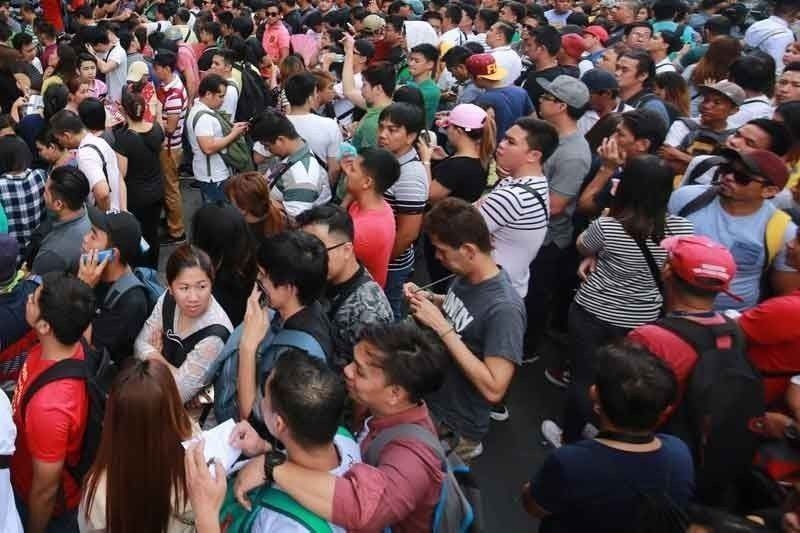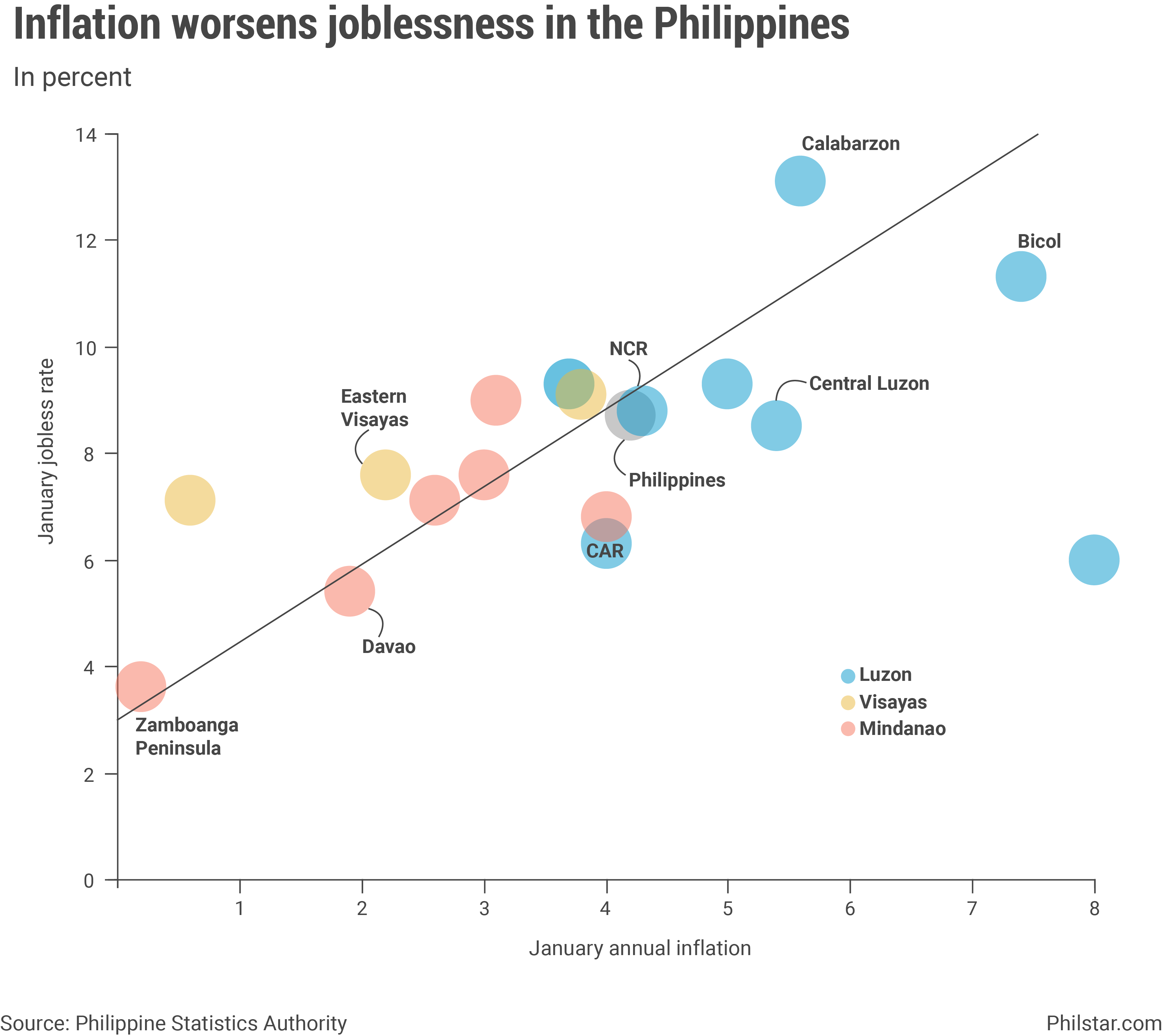Jobs return stunted as inflation forces search for bigger incomes

MANILA, Philippines — More people went jobless in January, while those employed wanted to have more as a double whammy of slowing growth and soaring prices scrambled Filipinos already scarred by the pandemic to look for a chance to earn more.
An estimated 4 million people did not have a job or business at the start of the year, up from 3.8 million in October, preliminary data from the Philippine Statistics Authority showed on Tuesday.
The size of the labor force, which gauges 15 years old and up, either employed or looking for work, grew to 45.2 million in the same month. With a bigger workforce and elevated unemployment, the latest data essentially suggest that jobs generation is not able to catch up with a growing number of people searching for livelihoods.
As a result, a sustained decline in the jobless rate after lockdowns were eased in July got disrupted, and in January the rate stayed at 8.7%. It hit a record-high of 17.6% in April 2020 just when the coronavirus forced a drastic economic shutdown that killed businesses and the jobs that go with them.
By specific location, eleven of 17 regions saw unemployment go up led by Calabarzon to 13.1%. Metro Manila's rate dipped to 8.8%, albeit still hovered above national average. Zamboanga Peninsula had the lowest at 3.6%.
The bleak jobs report confirms an ongoing struggle for the Philippines to get back on its feet from the pandemic's wrath, and what the public consider as a messy state response to it. With government unwilling to provide cash handouts this year, economic managers were hoping easing restrictions will be enough to prompt establishments to reopen and hiring to kick off, only to get disappointed by current data.
In total, National Statistician Claire Dennis Mapa said the economy restored 1.4 million jobs in the first quarter, down from over 2 million in the previous 3 months.
“The smaller progress in the past quarter suggests that we still need to address the remaining restrictions before the economy can get closer to normal,” the finance and budget departments, together with the National Economic and Development Authority (NEDA) said in a joint statement.
Worse, quickening inflation during a recession is only complicating the jobs problem. With prices of basic goods and services surging beyond affordability, the underemployment rate, which gauges employed people looking for more work, picked up to 16% in January from 2 straight quarters of decline.

Lacking job opportunities, a growing number of Filipinos are turning to part-time work to augment income. In January, 38.1% of employed individuals were working less than 40 hours a week, up from 33.1% in October. On average, working periods dipped to 39.3 hours per week from 40.8 hours previously.
While partially this was a result of jobs no longer fit to current prohibitions, Ernesto Pernia, an economist and former NEDA chief under the Duterte administration, also pointed to a conscious state decision to limit transport options, and therefore effectively killing the jobs of some drivers and operators. “This evidently is part of economic scarring,” he said in a text message.
As a fix, economic officials are sticking on their typical prescriptions of further loosening lockdowns, enacting crucial economic bills including one that lowers corporate taxes awaiting the president's signature, as well as swift vaccination against COVID-19.
Yet all present strategies are currently hampered by various roadblocks, from a fresh surge in COVID-19 cases, particularly in Metro Manila, delays in lawmaking as well as the slow rollout of inoculations.
For Leonardo Lanzona, labor economist at Ateneo de Manila University, the solution should involve more than relaxing quarantines. "The government thinks that once the lockdown is turned off, everything will get back to normal. Unfortunately, there is very little done in improving economic capacity especially in areas not affected by the pandemic," he said in a text message.
Still, the government is choosing to be optimistic. “The results of the January labor force survey are promising as it tells us that we are on track to getting back most of the jobs we have lost due to COVID-19 and the quarantines,” they said.
- Latest
- Trending































